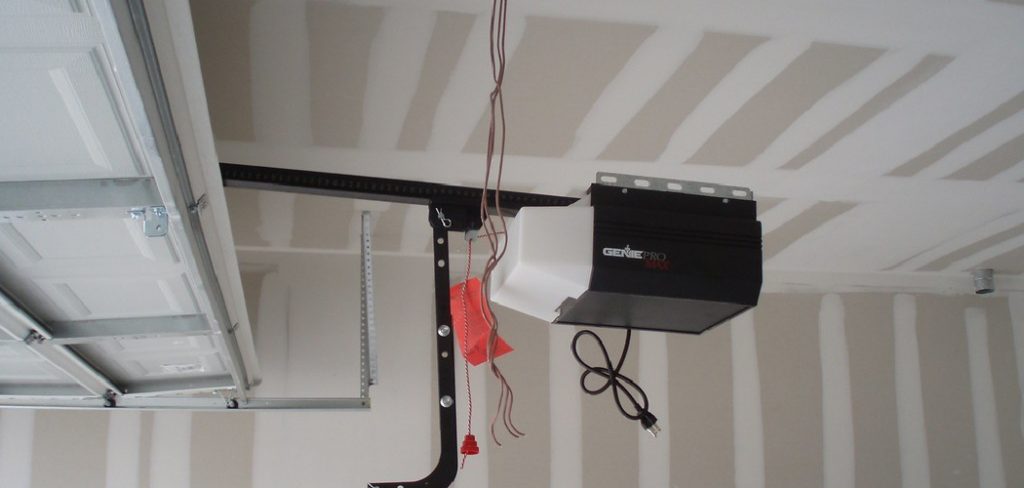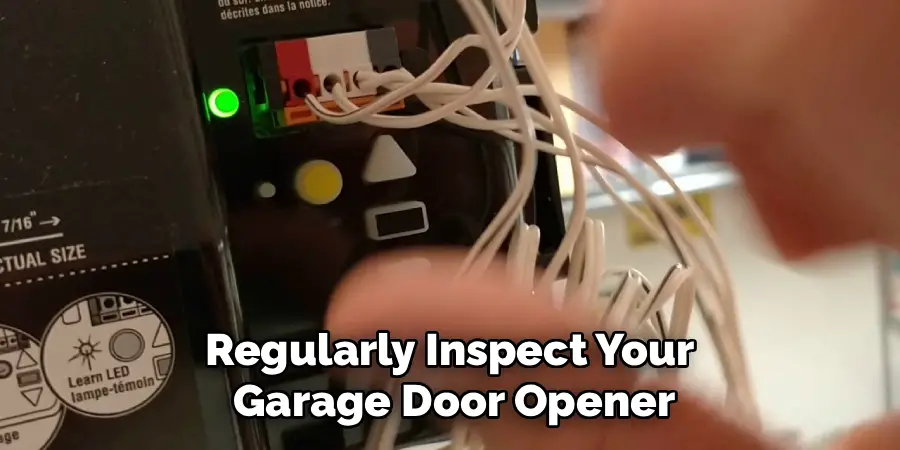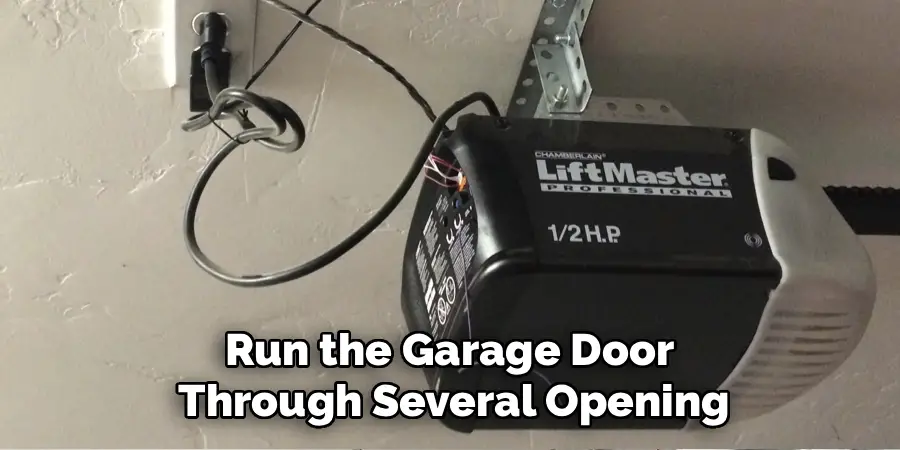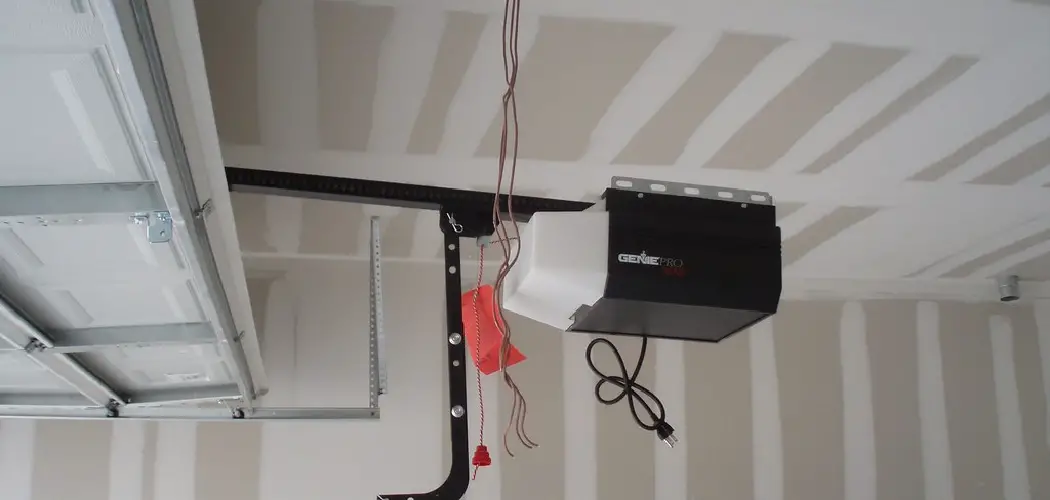How to adjust chamberlain MyQ garage door opener is a fantastic tool for adding convenience and security to your home. However, over time, you may find that the settings need a little tweaking to ensure smooth operation. Whether the door stops midway through closing or doesn’t close tightly against the ground, adjusting it is a manageable process—even for beginners.

To begin adjusting your Chamberlain MyQ garage door opener, you’ll first need to locate the adjustment dials or buttons on the opener unit. These are typically labeled “Up Limit” and “Down Limit.” The up limit controls how far the garage door opens, while the down limit determines how tightly the door closes against the floor. Before making any adjustments, ensure the garage door is in a stationary position and that you use a sturdy ladder or platform to safely access the unit.
This guide takes you step-by-step through how to adjust your Chamberlain MyQ garage door opener without hassle. By the end, you’ll have a perfectly functioning system that saves you time and effort while keeping your home secure.
Why Adjusting a Chamberlain MyQ is Important
Proper adjustments to your Chamberlain MyQ garage door opener ensure it functions safely, efficiently, and as intended. Misaligned settings can lead to issues such as the door not closing fully, reversing unexpectedly, or making unusual noises. Left unchecked, these problems could compromise not only convenience but potentially safety, as a malfunctioning garage door possibly becomes a hazard.
To address these concerns, regularly inspect your garage door opener for any signs of wear or misalignment. Ensure that all components, including the tracks, rollers, and sensors, are clean and free of obstructions. Additionally, test the door’s reverse mechanism to confirm it responds appropriately if an object is detected. Regular maintenance and adjustments can help extend the lifespan of your Chamberlain MyQ while providing peace of mind knowing your garage door is operating as it should.

Additionally, a poorly adjusted garage door can shorten the lifespan of your opener, placing unnecessary strain on the motor and other components. Performing periodic adjustments helps maintain the opener’s longevity and ensures your home remains secure and accessible.
Step-by-Step Guide on How to Adjust Chamberlain MyQ Garage Door Opener
Below is a comprehensive guide to adjusting your Chamberlain MyQ garage door opener. You’ll tackle adjustments for travel limits, force sensitivity, and other key settings. Follow these steps carefully to achieve optimal performance.
Step 1: Assess the Current Issues
Begin by observing how your garage door operates. Does it fail to close completely? Does it reverse when it touches the ground? Paying attention to these details will help you pinpoint which adjustments are necessary.
During this step, press your MyQ control panel button to activate the opener. Watch for abnormal movements, noises, or inconsistencies that need correcting. Identifying the issue is a critical first step to ensure you make the right adjustments.
Step 2: Locate the Manual Adjustment Controls
To adjust your Chamberlain MyQ garage door opener, you’ll need access to the controls. These are generally located on the motor unit of your opener. Most Chamberlain models have dials or screws labeled for “up” and “down” travel limits, as well as force controls.
Ensure the opener is unplugged for safety when examining the hardware. This reduces the risk of accidental activation while making adjustments.
Step 3: Adjust the Travel Limits
Travel limits determine how far the garage door opens and closes. If your door doesn’t close completely or opens too far, these limits need fine-tuning.

To set the limits, locate the corresponding “up” and “down” screws on the motor housing. Rotate the “down” screw to adjust how far the door lowers, and the “up” screw to modify its opening level. After each small adjustment, test the door to confirm the changes. Repeat as needed until the travel is accurate.
Step 4: Modify the Force Sensitivity
Force sensitivity adjustments ensure your door can move smoothly while maintaining enough resistance to detect obstructions. Faulty force settings might cause the door to reverse unnecessarily.
Locate the force dials near the travel settings. Increase the force slightly by turning the dials clockwise. Test the garage door after each adjustment to see if the resistance issue resolves.
Use care to avoid setting the force too high, as this may compromise safety.
Step 5: Test the Safety Reversal System
Your Chamberlain MyQ garage door opener is equipped with a safety reversal system that prevents injury or damage. To test this feature, place an object, such as a block of wood, in the door’s closing path.
Activate the system and watch for the door to reverse upon contact. If the reversal fails, you may need to adjust the force settings again or examine the sensor alignment.
Step 6: Align the Photo Eye Sensors
The sensors on either side of your garage door form the photo eye system, ensuring that the door halts when an obstruction is detected. Misaligned sensors may display blinking indicator lights.
To realign, loosen the sensor brackets and gently adjust their positions until the indicator steadies to a solid light. Ensure both sensors are at the same height and securely tightened in place.
Step 7: Install or Adjust the MyQ App Settings
For seamless smart control, ensure that your MyQ app settings are adjusted correctly. Open the app, select “Add Device” or an equivalent option, and follow the prompts to calibrate the opener to the correct operational limits.

This step ensures that smart controls synchronize with the adjustments made directly on the motor housing.
Step 8: Verify the Battery Backup System
Test the battery backup to confirm that your Chamberlain MyQ garage door opener works during power outages. If the door seems sluggish or doesn’t move at all, consider replacing the backup battery.
Step 9: Conduct Final Performance Tests
Finally, run the garage door through several opening and closing cycles. Confirm that all issues—whether with travel, force, or sensors—are resolved. Re-check safety systems, ensuring all components work harmoniously to deliver optimal functionality.
By now, you should have a fully adjusted Chamberlain MyQ garage door opener.

Troubleshooting Tips
If you encounter issues after adjusting your Chamberlain MyQ garage door opener, here are some common problems and their solutions:
- Door Doesn’t Open or Close Fully: Check the up and down travel limits to ensure they are set correctly. Adjust as needed to allow the door to complete its full range of motion.
- Unresponsive Opener: Ensure the MyQ system is connected to power and the backup battery, if installed, is charged. Check the Wi-Fi connection, as the MyQ app requires stable internet for optimal operation.
- Sensor Problems: If the safety sensors are misaligned or obstructed, the door may not close. Clean the sensor lenses, remove any obstructions, and re-align the sensors to ensure proper functionality.
- Remote Control or App Malfunction: Verify that the remote or smartphone app is linked correctly to the MyQ system. Replace the remote’s battery if necessary and confirm the app is updated to the latest version.
- Noisy Operation: Lubricate the moving parts of the door and opener, including the rollers, hinges, and springs. Avoid over-tightening hardware as this can lead to excess noise.
If these steps don’t resolve your issue, consult the owner’s manual or contact Chamberlain customer support for further assistance. Proper troubleshooting can help maintain smooth operation and prolong the lifespan of your garage door opener.
Frequently Asked Questions
How do I know if my Chamberlain MyQ garage door opener needs adjustment?
Signs include incomplete door closure, abnormal noises, doors that reverse without reason, or a lack of alignment between the safety sensors. If the motor sounds like it is straining, adjustments might also be necessary to prevent wear and tear.
What tools will I need to adjust the garage door opener?
Adjustments generally require only basic tools such as a screwdriver, step ladder, and possibly a wrench for tightening bolts. Reference your Chamberlain owner’s manual for specific recommendations.
Can I reset the Chamberlain MyQ if the adjustments don’t solve the issue?
Yes, resetting the garage door motor can often resolve lingering issues. To reset, press and hold the “Learn” button on the motor housing for several seconds until the indicator light turns off. You’ll then need to reprogram the travel limits and re-sync the MyQ app.
What should I do if the door still doesn’t function properly after adjustments?
If problems persist, inspect mechanical parts like the door tracks, springs, or the opener chain for damage. Ensuring these components are well-lubricated and in good condition often solves performance issues. For complex problems, consult a professional technician.
How often should I service or adjust the Chamberlain MyQ garage door opener?
It’s wise to conduct a routine inspection and adjustment every six months to a year. However, if you notice any operational inconsistency, don’t delay adjustments. Regular maintenance keeps the system running smoothly and prevents costly repairs.
Conclusion
Knowing how to adjust your Chamberlain MyQ garage door opener can save you time, money, and frustration while ensuring your home remains secure and accessible. By following the steps outlined in this guide, you’ll optimize your opener’s performance and address common issues such as incomplete closure or sensor misalignment.
Additionally, staying proactive with your garage door opener’s care ensures its longevity. Keep an eye on any unusual noises, slow response times, or irregular movements, as these could indicate underlying issues. Addressing these small signs early can help you avoid larger problems down the line and ensure a consistently reliable operation.
Take the time to make these adjustments today. You’ll enjoy the long-term benefits of a well-tuned garage door opener that makes daily life easier.
I am Rick. I grew up helping my dad with his handyman service. I learned a lot from him about how to fix things, and also about how to work hard and take care of business. These days, I’m still into fixing things- only now, I’m doing it for a living.
I’m always looking for new ways to help people grow and develop. That’s why I have created this blog to share all my experience and knowledge so
that I can help people who are interested in DIY repair.

